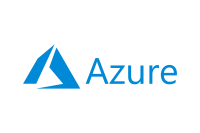Even with the popularity of cloud computing, a large portion of businesses still aren’t taking advantage of all that the cloud has to offer. From providing better access to your remote team to cheaper operating costs, cloud computing can make your business more efficient, more secure, and more collaborative.
To make switching to the cloud an easier decision, we’ve put together this guide to show the advantages of cloud computing and compare the top providers.
Table of contents
- What is a Cloud Service Provider?
- What are the Benefits of Cloud Computing?
- How Do You Choose a Cloud Provider?
- Best Cloud Service Providers
- Choosing the Best Cloud Provider for Your Organization
What is a Cloud Service Provider?
A cloud service provider is a vendor that offers cloud-based infrastructure or storage services. The provider handles all of the maintenance on the cloud environment, so the customer only has to worry about the data and applications they’re storing on the cloud. Cloud service providers can sometimes cover companies who offer cloud-based or SaaS applications, but this article will focus on providers that offer cloud infrastructure.
Also Read: Private Cloud vs Public Cloud
What are the Benefits of Cloud Computing
The benefits of cloud computing go deeper than cost savings alone. Data is easier to access, more secure, and less prone to disaster.
Long-term cost savings
While cloud migration is an expensive undertaking, more businesses will see long-term cost savings, assuming they use cloud cost control best practices. When you remove the need for on-premises servers, your operating costs drop significantly. Your IT team won’t have to dedicate large portions of its time to maintain the servers. Instead, they can focus on projects that will improve your company. Additionally, you won’t have the maintenance costs for the servers themselves.
Accessibility and team collaboration
The COVID-19 pandemic made it clear how crucial it is for employees to have access to company information and applications wherever they are. With remote work looking like it’s going to be the new norm, businesses need to switch to cloud computing to grant employees this access, if they haven’t already. With a public cloud, users access data through the internet, allowing them to work from anywhere. It also makes team collaboration easier because multiple team members can work on a document at the same time, even when they’re miles apart.
Increased security
Cloud companies invest heavily in cybersecurity to keep their customers’ data safe. Because of this, many organizations, especially small businesses, get a higher level of security than they would normally be able (or willing) to purchase for themselves. Cloud environments place less of a burden on in-house IT teams because many security functions are automated through the cloud provider and the responsibility of cybersecurity is shared between the organization and cloud provider.
Disaster recovery
Cloud providers incorporate a good deal of redundancy into their environments to ensure that should one server go down, they won’t lose any data or force downtime on their clients. On-premises servers usually don’t have the same backups. If a server goes down, organizations could face hours or even days of downtime trying to fix it and recover any lost data.
How Do You Choose a Cloud Provider?
While it might be tempting to focus on the price tag when it comes to choosing the best cloud provider, remember that the value of the cloud isn’t limited to dollars and cents. While long-term cost savings are definitely a benefit, your company should be more concerned with ensuring accessibility, security, and the ability to recover data after a disaster.
Before deciding on your cloud provider, take a closer look at the data and applications you plan to migrate. Once you have a better idea of what you need, it’ll be easier to decide which platform offers the features that complement those needs best. Take advantage of free trials or new customer offers to ensure that your team can work with the platform before committing to it fully.
Also read: Cloud Migration Cost Analysis & Tools
Best Cloud Service Providers
Amazon Web Services
Amazon Web Services (AWS) is often touted as the leader in the cloud computing space. Gartner has named them a leader in their magic quadrant for Infrastructure and Platform services for ten years in a row. They have a large service offering, and companies of all sizes use AWS for their cloud environments. For the most part, they received high marks from their customers in the support category. Their support team is helpful, knowledgeable, and offers suggestions to improve the functionality of the cloud environment for their customers. The main drawback is that their pricing structure is hard to understand, leaving some companies confused and frustrated.

Pricing
AWS offers a pricing calculator to help potential customers estimate their cloud costs, but there are so many variables that it’s hard to actually get an accurate estimate. Many organizations also don’t know how many instances they’ll need until they’ve started migrating their data. Businesses using AWS for their cloud services should definitely use third-party cost management tools to optimize their cloud spend.
Key features
- 99.99% uptime SLA guarantee
- Free migration tools
- Global infrastructure
- Automatic capacity scaling
- Data backup and long-term storage
- Five types of databases
- Virtual private clouds
- Artificial intelligence (AI) and machine learning (ML)
Pros
- Large global availability
- Huge breadth of features
- Helpful customer support
Cons
- Pricing structure can be confusing and obscure
- AWS might limit new users’ access to cloud resources
Microsoft Azure
Microsoft Azure is a close second behind AWS. Although they were late to the cloud provider industry, they rose through the ranks quickly by moving their on-premises software (Microsoft Office, Sharepoint, etc.) to the cloud. Because of the popularity this software already enjoyed, it was a no-brainer for many organizations to follow it to the cloud. While there can sometimes be a steep learning curve, it’s one of the easier clouds to get set up, and it’s fairly easy to manage once it’s in place. However, you’re still probably going to need help from support at some point, and their actual support team and documentation don’t always offer the level of support users need. The platform is updated often, and the documentation just can’t keep up.

Pricing
Microsoft Azure’s pricing is equally difficult to discern. They offer many situational discounts, making it tough to tell what your actual price will be without talking to a sales representative. The software licensing system also isn’t very clear-cut, adding an extra layer of complication into the pricing mix.
Key features
- AI and ML
- Serverless computing
- Single sign-on (SSO) and multi-factor authentication (MFA)
- Data backup and storage
- DDoS protection
- Business continuity and disaster recovery solutions
- Capacity planning
- Business analytics
Pros
- Easy to set up and manage
- Regular platform updates
- 99.95% uptime guarantee
Cons
- Licensing and pricing is confusing
- Support isn’t as responsive as users would like
Oracle Cloud
Oracle Cloud works well for organizations that already use Oracle products or don’t have a high level of coding knowledge. Many businesses like the user interface and that it’s easy to get the platform to behave how they want. Unfortunately, the Oracle platform hasn’t been quite as strongly optimized as some of the others on the list, and it may not be as competitive price-wise with the others. It does offer a user-friendly interface according to its customers, but it doesn’t seem like their support team is quite as responsive as many would like. Some users would also like more tutorials on the different functionalities of the cloud platform to get more for their money.

Pricing
Oracle Cloud wins points for transparency in their pricing structure, although that may not be the best thing in their case. Their pricing sheet is about a mile long, and, unless you know the ins and outs of cloud computing, you’ll have a tough time making sense of it. Some customers have noted it’s priced on the higher end compared to other providers, so if cost is your biggest concern, you may be better off with another vendor.
Key features
- Application performance monitoring
- Database management
- Autonomous workloads
- Built-in firewalls and encryption
- DDoS protection
- Migration tools
- AI and ML
- Analytics cloud
Pros
- User-friendly interface
- Scalability
- Free tier is good for new users
Cons
- More expensive than competitors
- Support team is not as responsive as users would like
Also read: Oracle Adds Free Cloud Migration Services
Google Cloud Platform
Google Cloud Platform is a great option for organizations that use containers because they actually developed the Kubernetes standard that other cloud providers now use. In terms of market share, it’s currently in third, far behind both AWS and Microsoft. However, Google is working to improve the offerings and number of data centers worldwide to bridge that gap. It generally gets high marks for customer support from its users. Google is making a big push for their cloud platform’s growth, so support is easily accessible. There’s also good documentation for both the platform and APIs, which are available in multiple languages.

Pricing
Google uses the obscurity of its competitors’ pricing models to its advantage. Rather than following suit, GCP offers flexible contracts to its customers along with steep discounts in an attempt to draw clients who are currently spending large sums with their competitors. They also offer free credits to get new customers started and allow them to test the platform.
Key features
- AI and ML
- Migration tools
- Virtual private clouds
- Monitoring and management services
- Serverless computing
- Cloud storage and backup
- API management
- Google Kubernetes Engine
Pros
- Flexible contracts and good discounts
- Helpful and responsive customer support
- Good platform and API documentation
Cons
- Doesn’t offer as many features as AWS or Azure
- Some users found the interface confusing
Alibaba Cloud
Alibaba Cloud is the cloud leader in China with a large presence in the Asia-Pacific region. They offer solid, multilingual support, and their website is available in multiple languages. Unfortunately, the user interface isn’t very friendly for users who aren’t tech-savvy, and most organizations will need someone with strong coding skills to get the right level of functionality from the platform. The system has a relatively new knowledge base, but it seems like it covers a large variety of topics. In addition to their documentation library and blog, they also offer forums where other users can work together to solve problems, sometimes improving the speed to resolution. There are both photo and video tutorials, and most questions on the forums have at least one answer.

Pricing
Alibaba Cloud is unique in that they offer new customers the free trial with the highest value, worth anywhere from $450 to $1,300. This allows them to try out the platform and see how it works. All of their available services are priced on a pay-as-you-go model, which is great for businesses looking to scale. They also offer quite a few tools that are free of charge.
Key features
- Data storage, backup, and recovery
- Resource isolation
- Monitoring and management services
- Reporting and analytics
- Audit management
- Data visualization and real-time analytics
- Available in over 200 countries
- DDoS and SSL protection
Pros
- High-value free trial
- Helpful, multilingual support
- Video and photo tutorials available
Cons
- The user interface can be difficult for non-technical users
- Requires some coding knowledge to use effectively
Also Read: Top Cloud Providers: Alibaba Cloud vs. AWS
Choosing the Best Cloud Provider for Your Organization
Public cloud providers typically offer lots of bells and whistles along with free trials to get users to commit to their platform. However, remember that cloud migrations are expensive and time-consuming, so if you want to try out a couple of different cloud platforms before signing a contract, do so with small amounts of data or non-critical applications. This will give you an idea of how the environment functions before you invest the time and money into a full migration.
Read next: Creating a Cloud Migration Checklist


